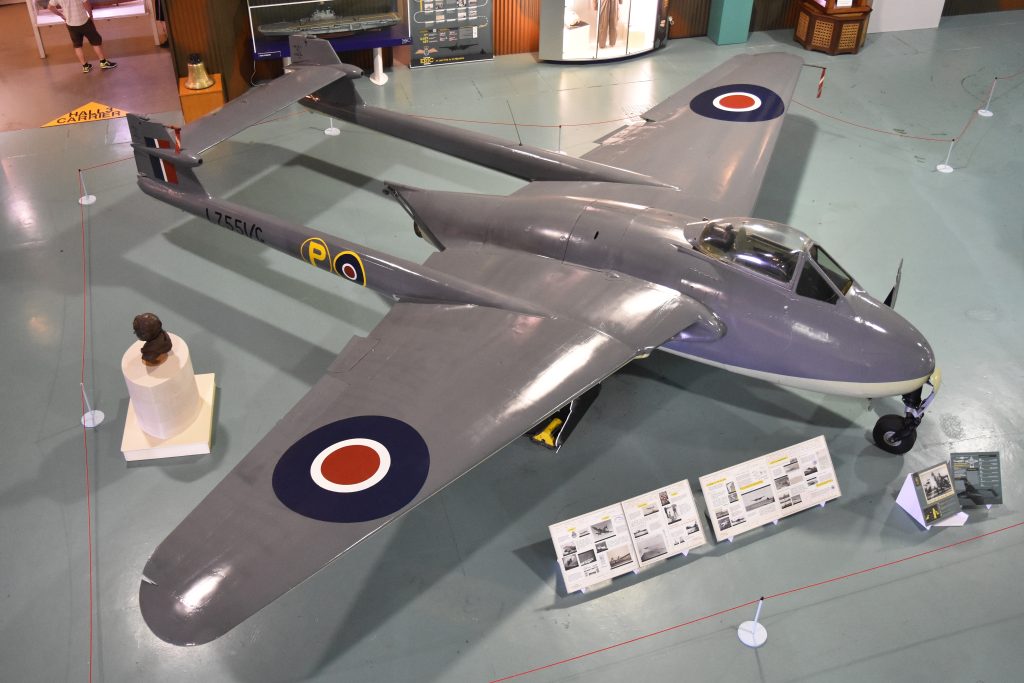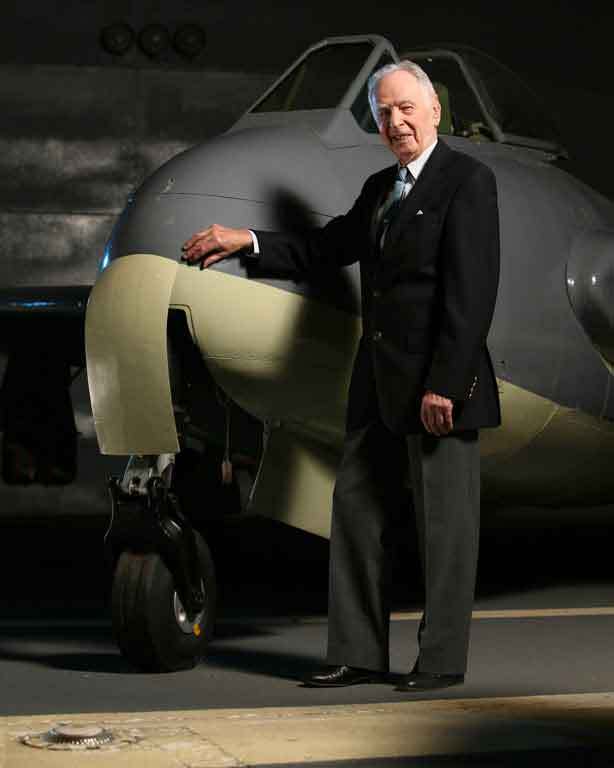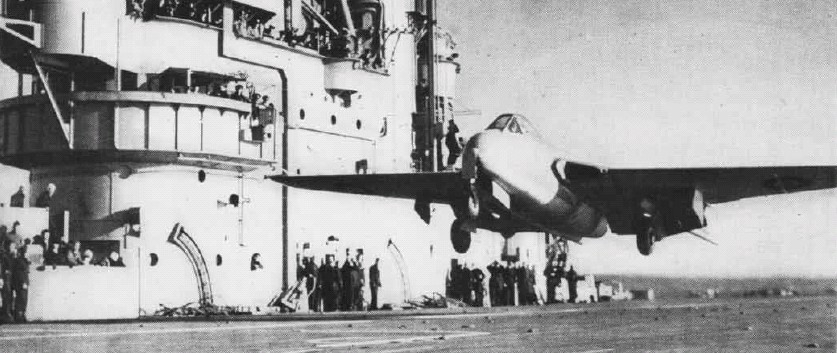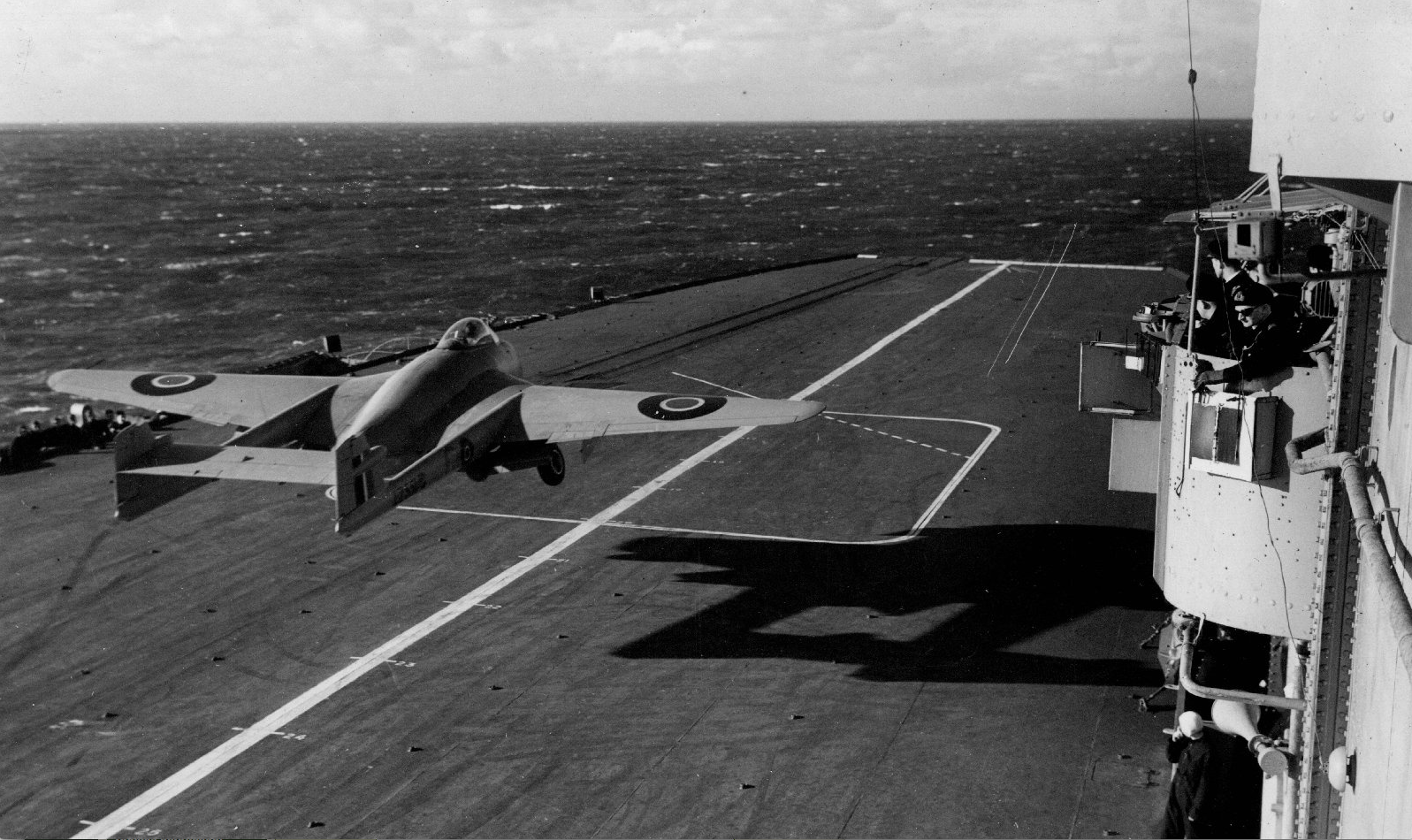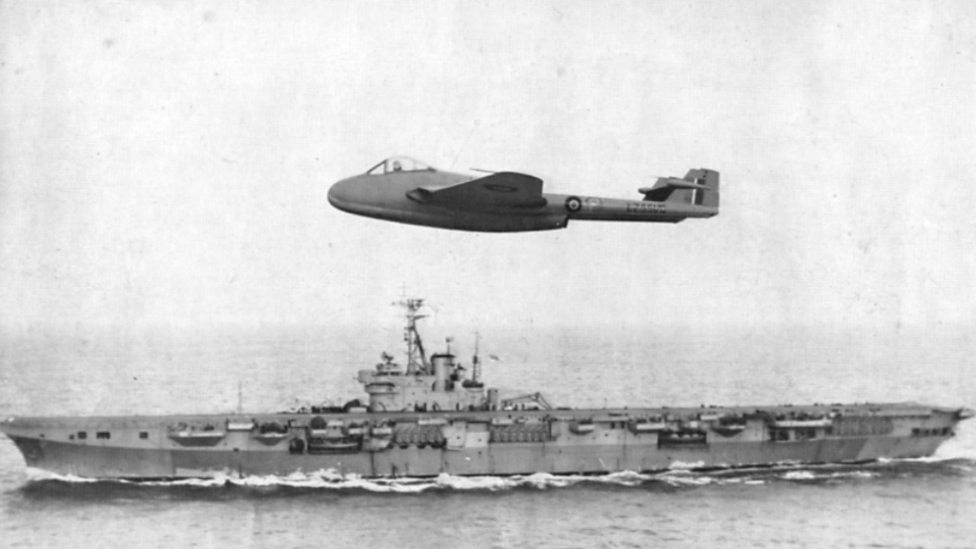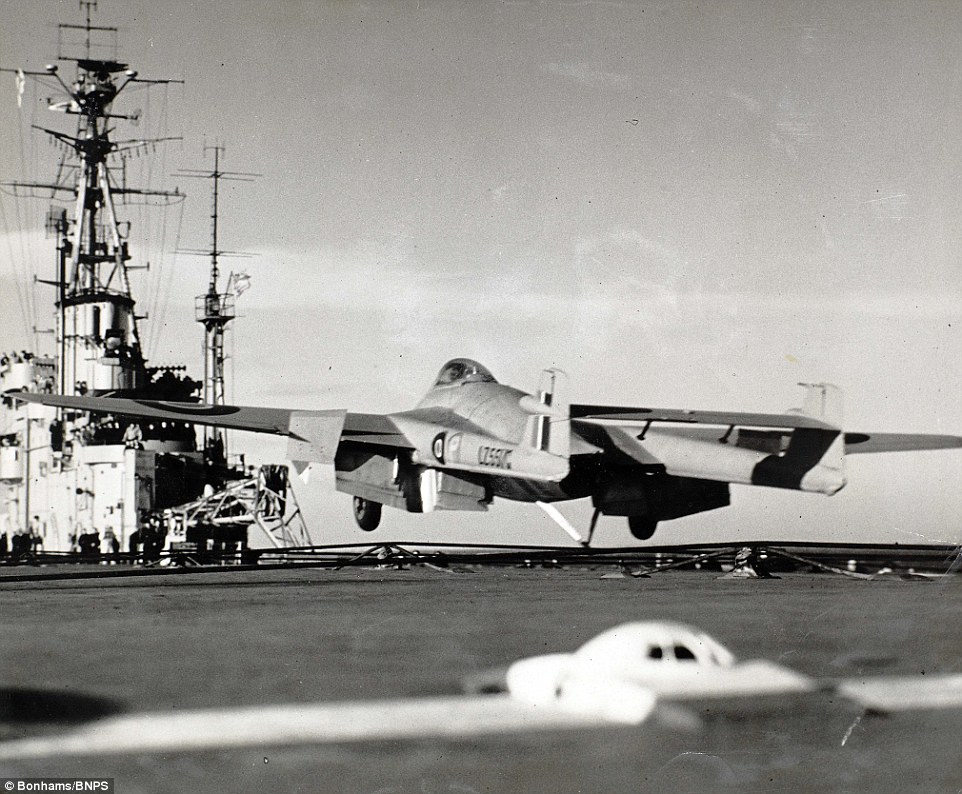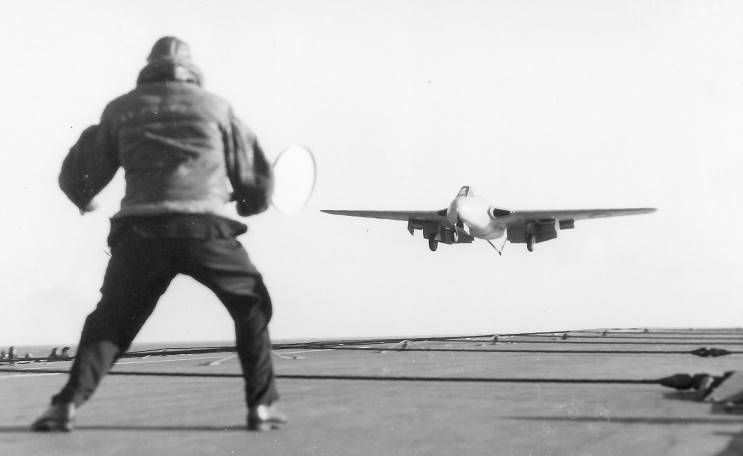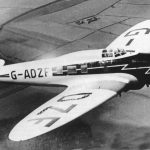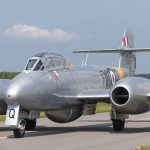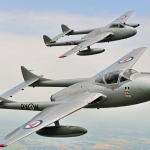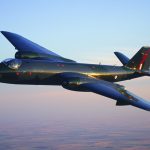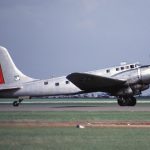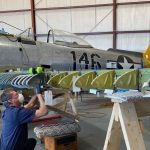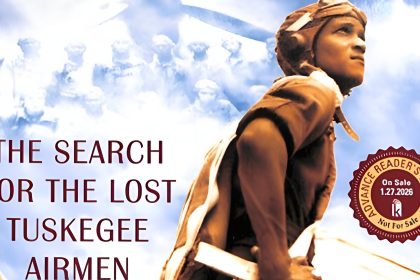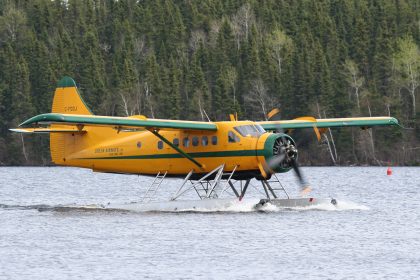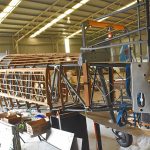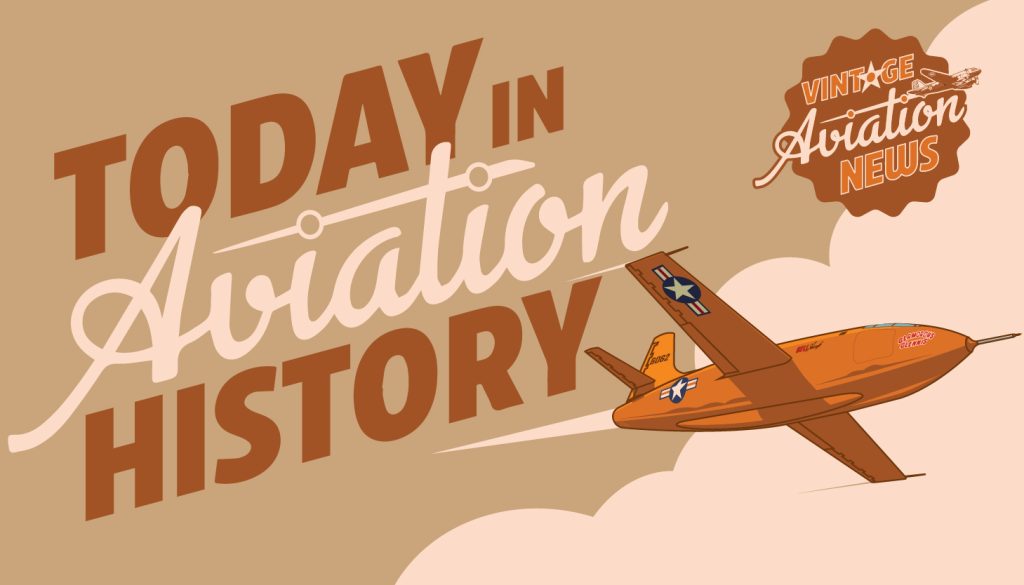 On this day, December 3, 1945, Lieutenant-Commander Eric Melrose “Winkle” Brown of the Royal Navy Volunteer Reserve and Chief Naval Test Pilot at the Royal Aircraft Establishment (RAE) at Farnborough, made the first landing and takeoff of a jet-powered aircraft aboard an aircraft carrier at sea. This remarkable feat would prove definitively that jet aircraft would revolutionize not only the world’s land-based air forces, but also the world’s naval air arms.
On this day, December 3, 1945, Lieutenant-Commander Eric Melrose “Winkle” Brown of the Royal Navy Volunteer Reserve and Chief Naval Test Pilot at the Royal Aircraft Establishment (RAE) at Farnborough, made the first landing and takeoff of a jet-powered aircraft aboard an aircraft carrier at sea. This remarkable feat would prove definitively that jet aircraft would revolutionize not only the world’s land-based air forces, but also the world’s naval air arms.
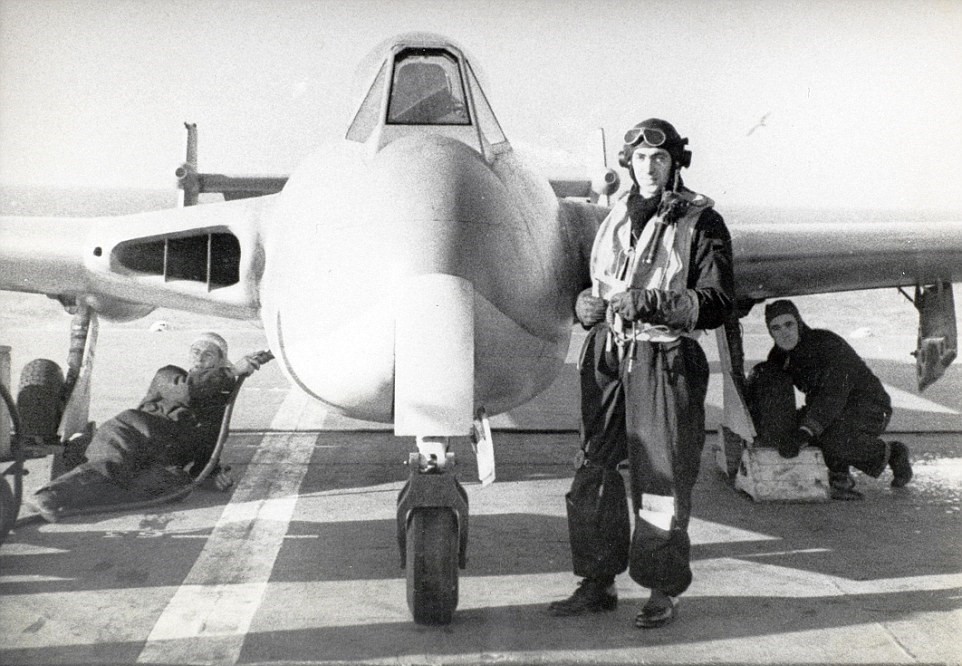
By the end of WWII, the two largest navies in the world, the British Royal Navy and the United States Navy, had observed the speeds and capabilities of new jet powered aircraft, from the German Messerschmitt Me 262 to the Lockheed P-80 Shooting Star and the Gloster Meteor, and realized that they had to develop jet aircraft that were capable of operating from aircraft carriers, already a demanding task for traditional piston engine aircraft, let alone an as-yet untested aircraft with a whole new propulsion system. Thus, the Royal Navy and the US Navy would enter a friendly rivalry over who could lay claim to this milestone. Both navies were already developing dedicated jet aircraft for carrier operations, but several land-based jets already in service were also undergoing modifications to become the first jet aircraft on a carrier.
The aircraft behind this achievement was a modified example of the de Havilland DH.100 Vampire, the second jet fighter to enter service with the Royal Air Force, second only to the Gloster Meteor. De Havilland produced an initial batch of three prototypes before wartime demands for existing aircraft such as the DH.98 Mosquito took priority. Among these first three prototypes was the third prototype, Mk. F.1 LZ551/G, which was first flown on March 17, 1944, and subsequently used for flight testing. After making a wheels-up landing at RAF Tangmere on June 6, 1945, LZ551/G was sent for repairs at Hatfield Aerodrome and in that course of these repairs, it was determined to modify the aircraft for sea trials. The aircraft was fitted with an arrester hook, extra flaps, long travel oleos, and a new canopy. The aircraft made its first flight following the modifications on August 23 as the Mk.10, and by November it had been flown from Hatfield to Farnborough and then to Royal Naval Air Station Ford near Littlehampton. There, “Winkle” Brown took off on December 3, where he was to attempt to land on the Colossus-class light fleet carrier HMS Ocean (R68).
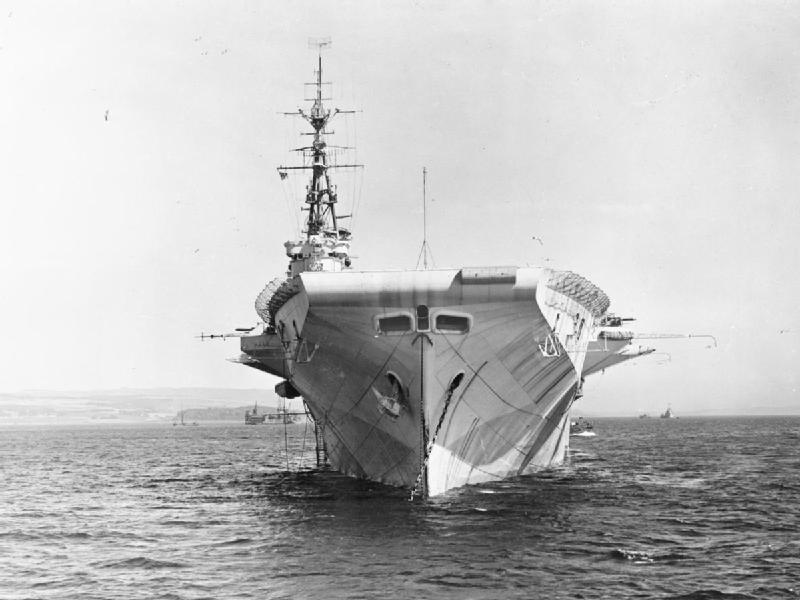
If there was any pilot could pull off this feat, it was Eric Brown. Having taken his first flight alongside his father Robert, he would have another formative flight with the German WWI flying ace and Luftwaffe general Ernst Udet in 1936 before joining the Royal Navy in 1939 at the start of hostilities. He served on the first British escort carrier, HMS Audacity, flying a Grumman Marlet (F4F Wildcat) to intercept Focke-Wulf Fw 200 Condor maritime patrol bombers before the Audacity was torpedoed and sunk by the German U-boat U-751 on December 21, 1941, and he was one of only two of a group of 24 survivors left adrift overnight before being rescued. In 1943, he joined the RAE at Farnborough as a test pilot, becoming the RAE’s Chief Naval Test Pilot. Among his ‘firsts’ in naval aviation, he was the first pilot to land a twin-engine airplane (a De Havilland DH.98 Mosquito) on the carrier HMS Indefatigable on March 25, 1944, the first to land an airplane with a tricycle undercarriage on the carrier HMS Pretoria Castle on April 4, 1945 (Bell Airacobra Mk 1 AH574 modified with an arrester hook) on April 4, 1945, and the first to land a helicopter on a ship at sea (a Sikorsky Hoverfly), and as a member of the RAE’s “Enemy Flight,” he flight tested captured German and Italian aircraft, from the Messerschmitt Bf 109 to the Heinkel He 177 Grief and became the only Allied pilot to fly a Messerschmitt Me 163 Komet under rocket power.
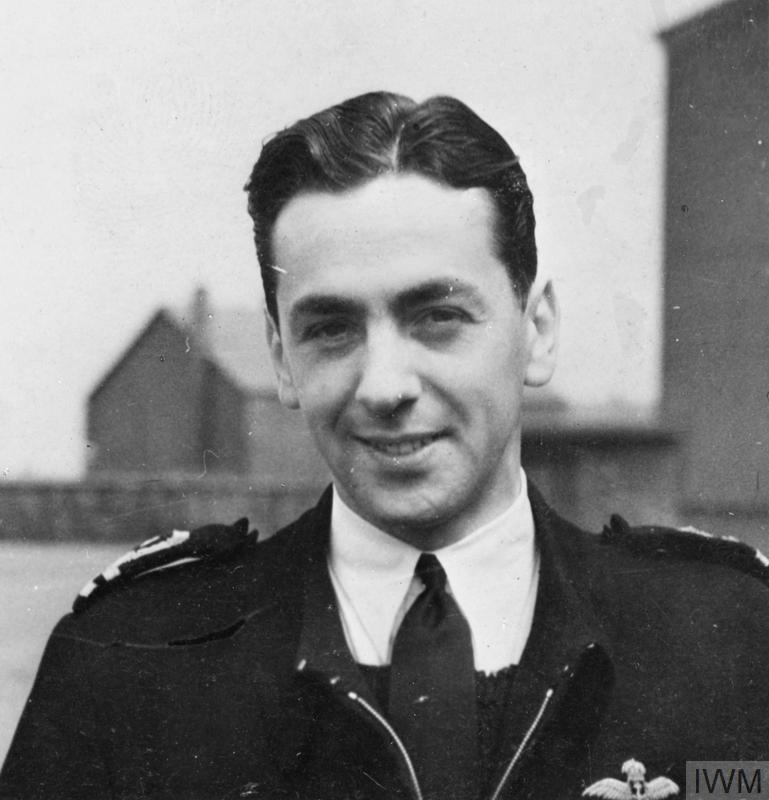
With HMS Ocean‘s deck pitching up and down with the swelling waves, there was some doubt to some onboard as to whether Brown would have to wave off and return to shore. Brown, however, was by this point a highly experienced naval aviator/test pilot and felt that he could make a safe landing. With cameras rolling, Brown brought the Vampire closer to the deck with flaps fully extended. Then, his hook snagged one of the cables stretched across the width of Ocean‘s flight deck, and the Vampire came to a stop. With Brown safely on the deck, the ship’s deckhands came out to greet Lt. Cmdr. Brown and inspect the Vampire, the first pure-jet aircraft to land on an aircraft carrier. Later that day, after the aircraft had been brought down to the hangar deck to be replenished, Brown took off from the deck of the Ocean, making the first takeoff of a jet from an aircraft carrier as well.
A month prior to Brown’s takeoff and landing, however, a Ryan FR-1 Fireball, a mixed propulsion fighter of the US Navy with both a piston engine and a jet engine, landed on the deck of the US escort carrier USS Wake Island (CVE-65) on November 6, 1945, while being flown by Ensign J.A. West. However, he only landed under jet power because the Wright R-1820 radial engine in his Fireball failed on approach, and West turned on his General Electric J31 turbojet engine to maintain control of his aircraft. Thus, Lt. Cmdr. Eric Brown’s landing remains the first jet carrier landing done with an aircraft using solely jet power.
For this pioneering flight, Eric “Winkle” Brown was made an Officer of the Most Excellent Order of the British Empire (OBE) on February 19, 1946. Brown would retire from the Royal Navy in 1970 with the rank of Captain, having served in the RN since 1939. He would also be recognized as having flown 487 different types of airplanes, more than any other pilot in aviation history, and performed 2,407 carrier landings and 2,271 carrier takeoffs, more than any other naval aviator. He would pass away peacefully in 2016, aged 96. After being used for further flight testing until 1957, Sea Vampire LZ551/G still exists today and can be found at the Fleet Air Arm Museum in Yeovilton, England.
